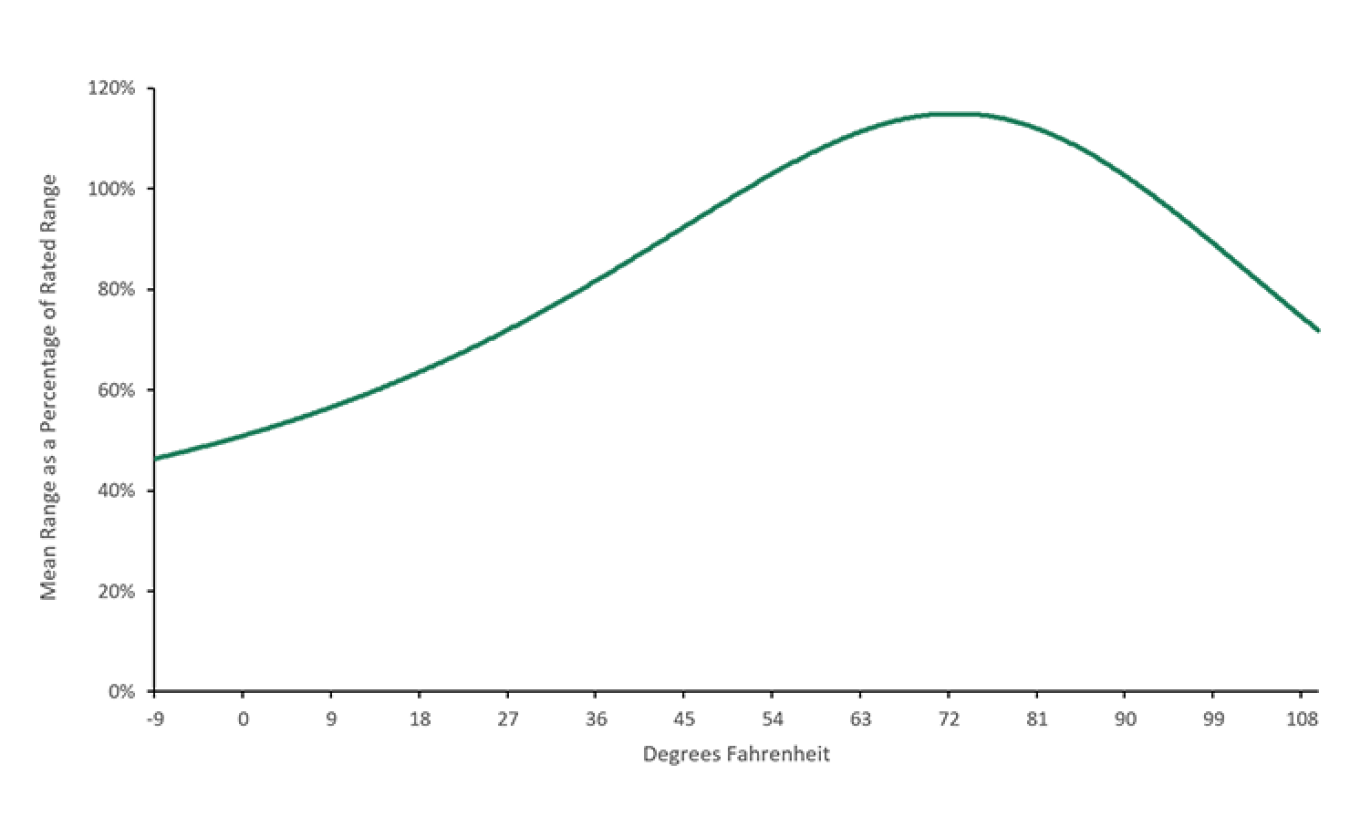Step 15 of the site-level federal fleet ZEV Ready process is to support drivers in operating zero-emission vehicles (ZEVs) and using electric vehicle supply equipment (EVSE).
Navigate the ZEV Ready Process
| ZEV Active Phase Steps |
|---|
| 13. Acquire ZEVs and EVSE |
| 14. Install and activate EVSE |
| 15. Support drivers in using ZEVs and EVSE |
Return to the ZEV Ready Center to see all 15 steps.
Primary Audiences
 | Site ZEV Champions |
 | Site Location Fleet Managers |
 | Facility Infrastructure Managers |
 | Facility Energy Managers |
 | Vehicle Operators |
The site ZEV champion, site location fleet managers, facility infrastructure managers, facility energy managers, and vehicle operators are the primary audiences for this process step.
This step takes place after the fleet location has received its ordered ZEVs, completed EVSE installation, and activated the charging stations. To help ensure a successful fleet management program, this process step outlines the responsibilities for the key fleet stakeholders at the site for ongoing management of ZEVs at the fleet location. This includes operator education and training (e.g., charging and driving ZEVs, managing battery electric vehicle [BEV] range, and using public charging stations), vehicle maintenance, and EVSE maintenance.
Vehicle Operator Education and Training
The Federal Energy Management Program (FEMP) and the General Services Administration (GSA) have developed many online resources to train fleet vehicle operators on how to operate ZEVs and use EVSE. FEMP recommends vehicle operators complete training before using ZEVs or EVSE, including the required and relevant recommended training materials referenced in Step 2: Review Training Materials.
Instruction should focus on the following topics:
- Introduction to ZEVs and EVSE
- Components of the charger
- Connecting to the electric vehicle (EV)
- Turning on the charger
- Safety
- Usage policies
The fleet may also consider posting instructional signage on the EVSE.
Driving an EV is not very different from driving a gasoline or diesel vehicle. They generally feature push-to-start technology like other modern vehicles, they include the same air conditioning and heating systems as conventional vehicles, and the accelerator, brake, and steering function in a similar way from a user perspective. There are a few key distinctions, however.
EVs recapture energy from braking that can later be used for propulsion. While there are some mechanical losses from the braking process and software to enable a smoother ride, regenerative braking is a major factor in an EV's improved efficiency (returning 22% of energy to the battery and ultimately to the road). An even larger factor is motor efficiency; internal combustion engine losses total 68% to 72%, while EVs lose 18%. This process of regenerative braking can be surprising to new EV operators, but it can allow more experienced EV operators to improve ride quality by slowing the car more smoothly.
EVs typically allow for different modes of operation, such as an eco-mode to extend range, a strong regenerative braking mode to recapture as much energy as possible, and a single-pedal driving mode that can bring the vehicle to a complete stop in some models.
Fully electric BEVs exclusively use electricity as fuel. BEVs on the GSA Fleet Alternative Fuel Vehicle Guide store between 150 and 350 miles of electrical energy in on-board lithium-ion batteries. Energy storage capacity varies based on ambient temperature, especially if heating or air conditioning are in use. As an example, Figure 1 shows how, at optimal temperatures (between 51°F and 90°F), the 2022 model year Chevrolet Bolt outperforms its 259-mile rated range. However, that can fall to less than 50% of the rated range at extreme cold or hot temperatures (less than -2°F greater than 123°F). These estimates and the figure below were developed based on average real-world driving range data from Geotab telematics.

Figure 1. At optimal temperatures (between 51°F and 90°F), the 2022 model year Chevrolet Bolt outperforms its 259-mile rated range; however, the vehicle’s range can fall to less than 50% of the rated range at extreme cold or hot temperatures.
Driving patterns and conditions affect EV range as well. EVs are more efficient at lower speeds and recapture energy from braking, resulting in higher efficiencies in city driving (94% to 100% power to wheels) compared to highway driving (77% to 79%).
Plug-in hybrid electric vehicles (PHEVs) can switch between electricity and gasoline as fuel sources. Therefore, they can be charged with EVSE and/or use fuel from gasoline stations. PHEVs generally have electric ranges less than 40 miles, and gasoline extends that range to 500+ miles for most of the available vehicle options.
BEVs may require use of public charging stations, such as for trips that exceed the vehicle range and when operating away from fleet charging stations. Charging at a public charging station is similar to refueling a conventional vehicle at a gasoline or diesel station.
When an EV requires charging at a public station, the first key step is to locate the most convenient public charging stations nearby. Vehicle operators may use the Alternative Fueling Station Locator tool to help identify the location, charger type, and power rating of public EVSE. Additionally, vehicle operators may use other available charging station location websites or mobile apps, such as the Alternative Fuels Data Center, PlugShare, or ChargeHub.
The second key step, just like refueling conventional vehicles at public stations, is to ensure there is an acceptable payment method for the charging session. The GSA Fleet Services Card (provided by WEX) can be connected to a ChargePoint RFID card, at which point it serves as an accepted form of payment at ChargePoint-networked EV charging stations along with stations enabled by ChargePoint’s roaming networks EVBox, EVgo, EV Connect, Flo, and Greenlots. More information is available on the GSA website.
Maintaining Electric Vehicles
Fleet managers should expect less frequent and less costly maintenance for ZEVs compared to traditional internal combustion engine vehicles. Typically for BEVs, the only maintenance required is to rotate the tires twice a year, refill windshield washer fluid as necessary, and replace the brake fluid and wipers every few years. Additionally, battery technology has improved to the point where the useful life is often similar or longer to that of an internal combustion engine.
PHEV engines are used less frequently and at lower loads, reducing wear and tear on the engine. For all ZEVs, regenerative braking results in a lower impact on the braking system and the pads, extending the operational lifetime of brake pads and shoes.
The high-voltage systems in EVs should be maintained by certified EV mechanics. The simplest approach in many cases is to work with a local vehicle dealership on EV diagnostics and maintenance. There are options to develop on-site mechanics into certified EV technicians. For example, courses lasting from 12 to 16 weeks are available through various organizations (such as Clean Tech Institute or Tesla).
EVs generally cost less for maintenance compared to internal combustion engine vehicles, according to Consumer Reports and Argonne National Laboratory (see table below). EVs have fewer moving parts, do not require oil changes, and have brakes that last longer due to heat recapture in regenerative braking. Consumer Reports estimates the average BEV lifetime maintenance cost at $0.031/mile, PHEVs at $0.030/mile, and internal combustion engine vehicles at $0.061/mile. Argonne National Laboratory estimates average light-duty BEV maintenance at $0.061/mile, PHEV maintenance at $0.090/mile, and internal combustion engine vehicles at $0.101/mile.
| Study | Internal Combustion Engine Vehicle | Battery Electric Vehicle | Plug-In Hybrid Electric Vehicle | |||
|---|---|---|---|---|---|---|
| Cost/Mile | Cost/Mile | Percent Savings | Cost/Mile | Percent Savings | ||
| Consumer Reports | $0.061 | $0.031 | 49% | $0.03 | 51% | |
| Argonne National Laboratory | $0.10 | $0.061 | 40% | $0.09 | 11% | |
Federal light-duty vehicles leased from GSA are replaced within 5 to 7 years on average in the federal fleet, while many EV manufacturers offer an 8-year/100,000-mile warranty on the lithium-ion battery, although shorter warranties are often standard on powertrains.
Maintaining the EVSE
As discussed in Step 14: Install and activate EVSE, the primary stakeholders at each site location should develop an EVSE maintenance plan before operating the EVSE. EVSE requires ongoing support, in the form of inspections, routine preventive maintenance, and unscheduled maintenance.
Most EVSE or charging stations require some maintenance over their lifetime, including potential for individual components to malfunction. For non-networked EVSE, factors that may increase maintenance include EVSE utilization, climate, and exposure to the elements. Networked EVSE tends to have higher operational and maintenance requirements. These charging stations typically include payment processing and data collection services that include additional components such as card readers and touchscreens. Networked EVSE units likely require more maintenance compared to non-networked units; if authorization is required to charge, EVSE downtime increases significantly, according to an Avista Corp. pilot study.
Ongoing maintenance costs should be factored into EVSE acquisition to avoid extensive downtime. The Alternative Fuels Data Center recommends budgeting up to $400 annually per charger. Maintenance plans for EVSE are available through the GSA EVSE BPA.
Previous Step
Go back to Step 14: Install and Activate EVSE.

